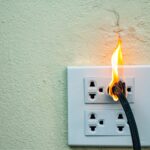Imagine waking up to a sudden gush of water from your kitchen sink or a feeble trickle during a morning shower. The culprit? A failing water pressure regulator disrupting your home’s plumbing harmony. Maintaining optimal water flow and pressure is crucial not only for convenience but also for the longevity of your plumbing system. Dive into our comprehensive guide and empower yourself with the knowledge to replace your water pressure regulator effectively.
- Recognize the warning signs of a malfunctioning water pressure regulator, such as fluctuating pressure and unexpected noises.
- Equip yourself with essential tools like adjustable wrenches and Teflon tape for a hassle-free replacement.
- Follow our detailed, step-by-step instructions designed to guide you through replacing the regulator safely and efficiently.
- Learn crucial safety tips to prevent injuries and ensure proper installation while working on your plumbing system.
- Understand the advantages of a well-maintained water pressure regulator, from enhanced water efficiency to prolonged appliance lifespan.
By applying these insights, you ensure consistent water flow and safeguard the health of your plumbing system. Delve deeper into the specifics and discover how simple maintenance can lead to lasting benefits.
Identifying the Signs of a Failing Water Pressure Regulator
The water pressure regulator plays a crucial role in ensuring the consistent flow of water through your plumbing system. Recognizing the signs of a failing regulator can prevent extensive damage and costly repairs.
One of the primary indicators that your water pressure regulator is malfunctioning is inconsistent water pressure. If you notice fluctuating pressure when using faucets or showers, it might be time to inspect your regulator.
Unusual noises, such as banging or knocking sounds coming from your pipes, can also signify a water pressure regulator issue. These noises often occur due to pressure variations and can be a clear signal that maintenance is needed.
Leaks around the regulator area or unexplained water drips can also point to a faulty regulator. Regularly checking for these leaks is essential to avoid further complications.
By understanding these common symptoms, you can be proactive in addressing potential failures in your plumbing system, ensuring your water pressure remains optimal.
Tools Needed for Replacing a Water Pressure Regulator
Having the right tools on hand is vital to effectively replace a water pressure regulator. This ensures the process is efficient and minimizes the risk of additional issues.
A pair of adjustable wrenches is essential. These will allow you to loosen and tighten the nuts around the regulator securely. The adjustability is key, given the different sizes you may encounter.
Teflon tape is another important tool, often used to seal the threads of the new regulator. This prevents leaks and ensures a tight seal which is crucial for proper functionality.
Additionally, having a replacement water pressure regulator that matches the specifications of your current setup is necessary. This makes the installation smoother and permits better integration into your existing plumbing system.
With these tools prepared, you can confidently proceed with replacing your water pressure regulator, ensuring it operates efficiently for years to come.
Step-by-Step Guide: How to Replace a Water Pressure Regulator
Replacing a water pressure regulator is a task that can be managed at home with some basic tools and a careful approach. To ensure you carry out the process efficiently, follow these straightforward steps to achieve a professional-level installation.
1. Turn Off the Water Supply: Begin by shutting off the main water supply to avoid any leaks or spills during replacement. This is typically done at the water meter.
2. Drain the Pipes: Open nearby faucets to drain the water remaining in the pipes. This step reduces pressure and makes the process less messy.
3. Remove the Old Regulator: Use an adjustable wrench to unscrew the fittings of the existing water pressure regulator. Carefully detach it from the pipes, ensuring you do not damage any connections.
4. Prepare for Installation: Before installing the new regulator, clean the pipe threads thoroughly. Apply Teflon tape to the male threads on the pipe to ensure a secure and leak-proof connection.
5. Install the New Regulator: Attach the new water pressure regulator to the pipe threads, tightening the fittings with an adjustable wrench. Make sure the flow direction on the regulator matches the flow of water in your system.
6. Check for Leaks: Turn on the main water supply slowly and observe the installation area for any signs of leaks. If leaks are present, tighten the connections further.
7. Adjust the Pressure: Once installed, adjust the pressure settings on the regulator to your desired level. Most regulators come with a pressure gauge or adjustment bolt for convenience.
These steps will guide you through replacing a water pressure regulator effectively, ensuring your plumbing system maintains optimal performance.
Safety Tips When Replacing a Water Pressure Regulator
Working with plumbing systems involves certain risks. By following these safety tips, you can minimize potential hazards and conduct the task with confidence.
Use Protective Gear: Wear gloves and safety goggles to protect yourself from debris and any unexpected water sprays.
Ensure Stability: Make sure your ladder or step stool (if needed) is stable and on a flat surface to prevent falls while accessing higher areas.
Be Cautious with Tools: Handle wrenches and other tools carefully to avoid injuries. Be particularly mindful of your fingers when working in confined spaces.
Inspect the Area: Check for electrical fixtures near the working area to avoid accidental contact with water, which could lead to electrical shock.
With these safety measures in mind, you can replace your water pressure regulator with minimal risk and maximum effectiveness.
Benefits of Properly Replacing a Water Pressure Regulator
A well-maintained and properly functioning water pressure regulator plays a crucial role in the health of your home’s plumbing system. By ensuring that your water pressure is regulated, you not only enhance water efficiency but also extend the lifespan of your household appliances.
One significant advantage of replacing a faulty water pressure regulator is improved water efficiency. When your regulator is functioning optimally, it prevents excessive water pressure, which can cause wastage and lead to inflated utility bills. With a consistent and controlled water flow, you’re using only the necessary amount of water, making your home more sustainable and cost-effective.
Moreover, addressing issues with your water pressure regulator can lead to extended appliance life. Elevated water pressure puts a strain on household appliances, including dishwashers, washing machines, and water heaters, causing them to wear out prematurely. By maintaining appropriate water pressure, you’re ensuring that these appliances operate under optimal conditions, reducing wear and tear and minimizing the need for costly repairs or replacements.
A properly replaced water pressure regulator also contributes to enhanced plumbing system longevity. Excessive pressure can damage pipes, leading to leaks and bursts that require extensive repairs. With the right regulator in place, you can prevent these issues, keeping your plumbing system intact and reducing the risk of water damage within your home.
In conclusion, taking the time to replace and maintain your water pressure regulator equates to significant long-term savings and efficiency in your home. Regular checks and maintenance of this essential component will not only ensure a better-regulated water flow but also protect your investment in your home’s infrastructure.
Frequently Asked Questions about Water Pressure Regulators
What is a water pressure regulator?
A water pressure regulator is a device that controls and maintains the water pressure entering your home at a safe level.
How do I know if my water pressure regulator is failing?
- Inconsistent water pressure
- Unusual noises
- Leaks
are common signs of a failing water pressure regulator.
What tools do I need to replace a water pressure regulator?
- Adjustable wrenches
- Teflon tape
- A replacement water pressure regulator
are essential for replacement.
How often should I replace my water pressure regulator?
Typically, a water pressure regulator needs replacing every 10-15 years, but this depends on usage and water quality.
Are there safety precautions to consider?
- Turn off the main water supply
- Ensure the area is dry
- Wear protective gear
are essential safety measures.
What are the benefits of replacing a faulty water pressure regulator?
- Improved water efficiency
- Extended appliance life
- Reduced plumbing issues
are key benefits.
Can I replace a water pressure regulator myself?
Yes, with the right tools and steps, most homeowners can perform the replacement. However, consulting a professional is advised if unsure.





